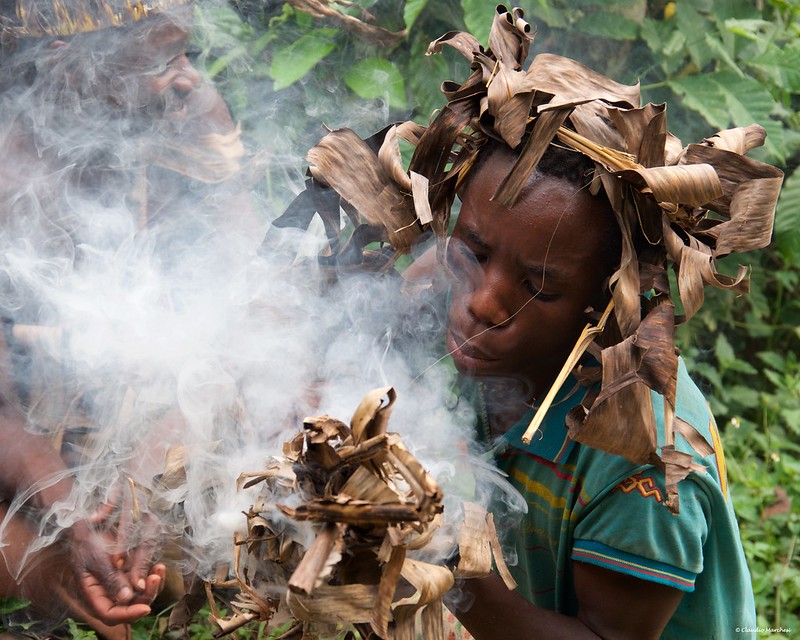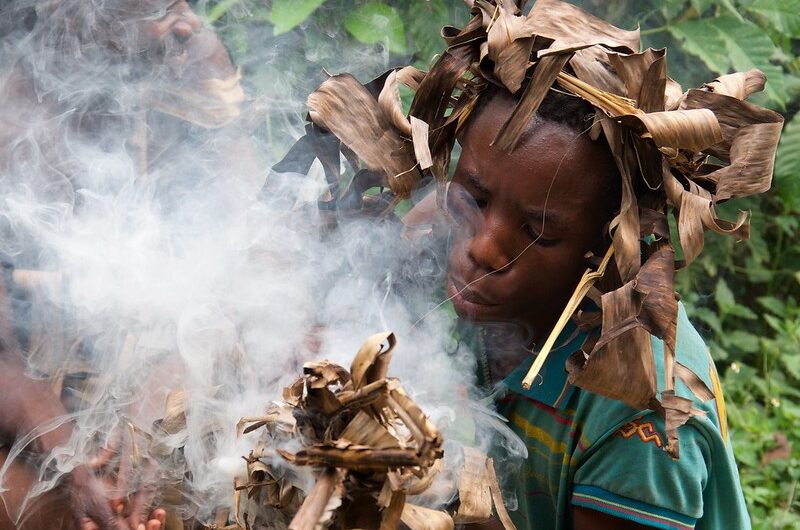Community Walk
One of the things one should do when at the Rushaga Gorilla Sector of the Bwindi Impenetrable Forest National Park is take a community walk or experience Batwa.
Originally inhabited by the Batwa Pygmies, who were the original inhabitants and custodians of the tropical rain forest, Bwindi Impenetrable Forest National Park was designated as a national park. Following the pygmies’ relocation from the forest to the neighboring towns and villages, the park was gazetted in 1993.
The Batwa Pygmies have long relied on the resources found in the forest to support themselves. For their survival on the plantations, the Batwa pygmies are always dependent on forest resources. They used spears and arrows to gather meat, ate fruits, and ate honey while suffering in the wilderness. They built nests out of trees and utilized plants as medicine.
The Batwa pygmies have always coexisted peacefully in the forest alongside endangered animals, monkeys, and many other species.
When the park was designated a World Heritage Site, the Batwa people were driven out of it, and as a result, their way of life changed since they were not accustomed to living outside of the forest.
Experience with the Batwa Walk
There is no park entrance charge required to enjoy a Batwa trail stroll. The Batwa community stroll takes place off the park’s grounds.
The Batwa community walk begins at the artisan stores outside the Bwindi Impenetrable National Park headquarters, and a guide will lead you through the Batwa people’s communities.
The cost of the community walk is 80 USD per person, 70 USD per person in groups of two to four, and 60 USD per person in groups of five or more. Additionally, there is a 400 USD daily fee to film the activity.
There is no set time to trail, but the Batwa trek takes five hours for the whole experience. Although there is a morning stroll, the trail begins at 2:00 pm. The walk is not recommended for people with health conditions, and the guides always go at their own pace.
Bring a packed lunch from the resort, water, a camera, comfortable shoes or hiking boots, long sleeves, and a rain jacket. Recall that it never stops pouring in the Bwindi Impenetrable Forest.
A group can have as few as 12 people or as many as 24 individuals on a walk; 12 people go on the morning walk and 12 people go on the evening walk.
They will teach you a lot, and you will also have the opportunity to learn about their culture, how they lived in the forest, how they danced, how they cooked, and how to try the local cuisine.
You will have the most amazing safari experience of your life, and there are many things to learn from the trek.

